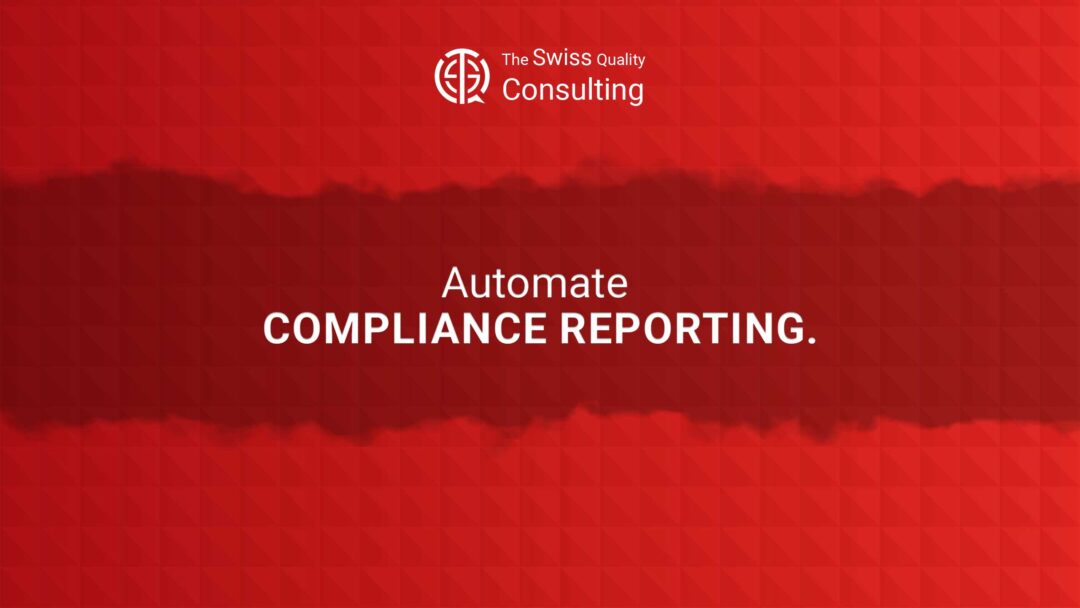Efficiency, Accuracy, and Confidence in Regulatory Compliance
In the ever-evolving landscape of business, regulatory compliance is a cornerstone of success. Business executives, mid-level managers, and entrepreneurs understand that adherence to regulations is not just a legal requirement; it’s a critical aspect of maintaining trust and credibility. To navigate the complex web of compliance requirements, businesses are increasingly turning to automation. In this article, we delve into the significance of automated compliance reporting and how it can streamline operations, ensure accuracy, and bolster business success.
The Challenge of Regulatory Compliance
Regulatory compliance encompasses a wide range of rules, standards, and laws that businesses must adhere to in their operations. These regulations can span various industries, from finance and healthcare to manufacturing and technology. Ensuring compliance is a multifaceted challenge that involves:
1. Staying Informed:
Regulations are constantly evolving, making it essential for businesses to stay up-to-date with changes and new requirements.
2. Data Collection:
Collecting and managing the data necessary for compliance reporting can be a time-consuming and error-prone process.
3. Reporting Accuracy:
Mistakes in compliance reporting can lead to legal issues, financial penalties, and damage to a company’s reputation.
4. Resource Allocation:
Assigning personnel to manage compliance reporting can divert resources away from core business activities.
The Advantages of Automated Compliance Reporting
Automated compliance reporting offers a solution to the challenges associated with regulatory compliance. This approach involves the use of software and technology to streamline the collection, analysis, and reporting of compliance-related data.
1. Efficiency:
Automation significantly reduces the time and effort required for data collection and reporting. It can gather data from multiple sources, such as financial systems, databases, and spreadsheets, and compile it into standardized reports.
2. Accuracy:
Automated systems are less prone to human error, ensuring that compliance reports are accurate and consistent. This reduces the risk of regulatory violations and associated penalties.
3. Real-time Monitoring:
Automated systems can provide real-time monitoring of compliance-related activities, allowing businesses to identify and address issues promptly.
4. Data Security:
Automated compliance reporting systems often include robust security features to protect sensitive data from breaches and unauthorized access.
5. Resource Optimization:
By automating compliance reporting, businesses can allocate human resources more efficiently, focusing on strategic initiatives rather than administrative tasks.
The Role of Technology in Automated Compliance Reporting
The technology landscape offers a wide array of tools and solutions for automated compliance reporting. These technologies can be tailored to meet the specific needs of businesses in various industries.
1. Data Integration:
Integration platforms allow businesses to connect and synchronize data from disparate sources, ensuring that all relevant information is readily available for compliance reporting.
2. Reporting Software:
Specialized reporting software can generate compliance reports in standardized formats, making it easy to submit required documentation to regulatory authorities.
3. Artificial Intelligence (AI):
AI-powered systems can analyze data patterns and detect anomalies, helping businesses identify potential compliance issues before they escalate.
4. Blockchain:
Blockchain technology provides an immutable and transparent record of transactions, which can be particularly valuable in industries like finance and supply chain management where compliance relies on data integrity.
Case Study: The Impact of Automated Compliance Reporting
Let’s consider a real-world example to illustrate the advantages of automated compliance reporting:
**Company X** operates in the healthcare industry, subject to strict regulations related to patient data privacy (HIPAA). In the past, Company X manually collected and reported data for compliance, which was time-consuming and error-prone.
Upon implementing an automated compliance reporting system, Company X experienced the following benefits:
– **Time Savings:** The time required for data collection and reporting was reduced by 60%.
– **Accuracy:** Automated data validation and reporting reduced errors, ensuring compliance with HIPAA regulations.
– **Real-time Alerts:** The system provided real-time alerts for potential data breaches, allowing for immediate action.
– **Resource Allocation:** Staff previously dedicated to compliance reporting could now focus on patient care and strategic initiatives.
Choosing the Right Automated Compliance Reporting Solution
Selecting the appropriate automated compliance reporting solution is a crucial decision for businesses. Consider the following factors:
1. Regulatory Alignment:
Ensure that the chosen solution aligns with the specific regulations and requirements relevant to your industry.
2. Scalability:
Choose a solution that can scale with your business as it grows, accommodating increased data volume and complexity.
3. Integration:
Evaluate how well the solution can integrate with your existing systems and data sources.
4. Security:
Security features should be a top priority to protect sensitive compliance data.
5. Support and Training:
Consider the level of support and training provided by the solution provider to ensure successful implementation and ongoing maintenance.
Conclusion: Elevating Compliance Reporting to Drive Business Success
In conclusion, the adoption of automated compliance reporting is not just a trend; it’s a strategic imperative for businesses aiming for sustained success. By streamlining compliance-related processes, enhancing accuracy, and optimizing resource allocation, businesses can achieve regulatory compliance with confidence.
#ComplianceReporting #RegulatoryCompliance #BusinessSuccess #Automation #DataSecurity

